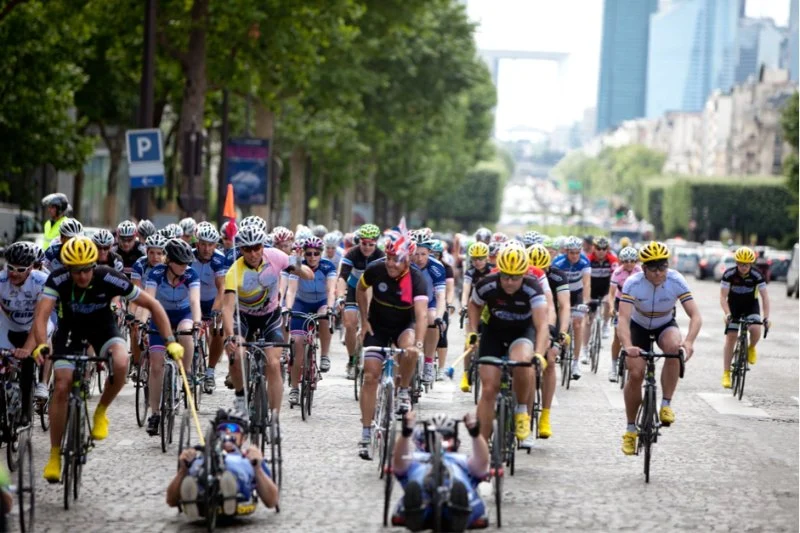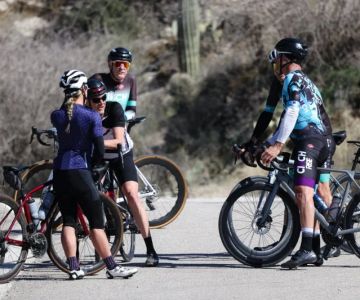
How to Ride in a Group Without Causing Chaos
- 1. The Importance of Group Riding Etiquette
- 2. Basic Rules for Group Riding
- 3. How to Ride in Sync with the Group
- 4. Handling Unexpected Situations in a Group Ride
- 5. Recommended Gear for Group Rides
1. The Importance of Group Riding Etiquette
Riding in a group can be an exhilarating and enjoyable experience, but it requires a certain level of skill and etiquette to ensure safety and prevent chaos. Group riding etiquette is essential not only for the safety of all riders but also for creating a harmonious experience. When riders fail to follow group etiquette, accidents can happen, and the fun can quickly turn into frustration. Whether you’re a beginner or an experienced cyclist, respecting group riding rules is the key to maintaining order and safety.
Group rides often involve different levels of experience, so understanding the importance of etiquette helps create a more inclusive environment. As a rule, always keep the safety of others in mind and communicate clearly to avoid confusion or accidents during the ride.
2. Basic Rules for Group Riding
To ride in a group without causing chaos, it’s crucial to adhere to some fundamental group riding rules. These rules help keep riders organized and prevent accidents, ensuring that everyone has a smooth and enjoyable experience.
- Maintain a steady pace: Keeping a consistent pace helps prevent sudden braking or swerving, which can be dangerous in a group setting. If you're unsure of the pace, ask the leader of the ride.
- Ride in a straight line: Always ride in a straight line when possible. This minimizes the risk of collision with other riders, especially in tight spaces.
- Signal your moves: Always signal your intentions by using hand signals. Let others know when you’re turning, stopping, or changing lanes. Clear communication reduces the likelihood of confusion.
- Keep a safe distance: Keep a safe distance from the rider in front of you, allowing enough time to react to sudden movements or stops. Typically, a distance of 1-2 bike lengths is recommended.
- Respect the leader: The leader of the group usually has a clear understanding of the route and pace. Follow their lead, as they’re there to ensure the ride runs smoothly.
3. How to Ride in Sync with the Group
Riding in sync with the group is essential for avoiding chaos and ensuring that everyone stays together. Here are some tips for staying in harmony with the other riders:
- Stay alert: Constantly pay attention to the riders around you, as well as the terrain. Stay aware of any sudden changes, such as the group slowing down or turning, so you can adjust accordingly.
- Communicate: Use verbal communication to inform the group of obstacles, changes in pace, or road conditions. Common phrases like "slowing down," "hole," or "on your left" can help prevent confusion.
- Stay relaxed: Tension can cause erratic movements. Keep your body relaxed and flexible, particularly when riding close to others. Tensed muscles can lead to sudden, unpredictable movements.
- Follow the rhythm: Each group has its own rhythm. Stay in sync with it by matching your pace with the group’s flow. Try to avoid sudden changes in speed unless necessary, which can cause a disruption in the group’s pace.
4. Handling Unexpected Situations in a Group Ride
Unexpected situations are bound to arise during group rides, but knowing how to handle them properly can prevent chaos. Here’s what you should do:
- Sudden stops: If the group has to stop suddenly, do so smoothly and predictably. Signal to the riders behind you that you are slowing down or stopping to prevent collisions.
- Road hazards: If you encounter obstacles like potholes, debris, or gravel, alert the riders behind you. Point to the hazard with your hand or call out to warn others.
- Mechanical issues: If you have a flat tire or mechanical issue, move off the road to a safe spot. If you can’t fix the issue quickly, wait for a support vehicle or let the ride leader know.
- Falling behind: If you’re struggling to keep up with the group, don’t panic. Let the ride leader know, and they can adjust the pace or assist you in catching up. It’s better to communicate early than to risk falling out of sync.
5. Recommended Gear for Group Rides
Having the right gear can make a huge difference when riding in a group. Here are some recommendations to ensure you’re properly prepared for your next group ride:
- Helmet: Always wear a helmet, regardless of the ride's duration or intensity. It’s the most important piece of safety gear.
- Group communication devices: A communication device like a walkie-talkie or headset can help keep the group coordinated, especially in large groups or on busy roads.
- Bright clothing: Wear brightly colored clothing to ensure you are visible to other riders, especially in low-light conditions or at dawn/dusk.
- Proper bike tools: Always carry the necessary tools, such as a tire repair kit, pump, and multi-tool. Having these tools handy can make a big difference in handling unexpected issues during the ride.
For the best cycling gear, be sure to check out Cycling Guider for a range of products designed to help you ride safely and comfortably in a group setting.







 Billet BMX5.0 (2 reviews)
Billet BMX5.0 (2 reviews) Far East Children Bicycle Factory1.0 (1 reviews)
Far East Children Bicycle Factory1.0 (1 reviews) Archer Motorsports, Inc.4.0 (8 reviews)
Archer Motorsports, Inc.4.0 (8 reviews) YEP Bike Works4.0 (55 reviews)
YEP Bike Works4.0 (55 reviews) Gorham Bike & Ski4.0 (498 reviews)
Gorham Bike & Ski4.0 (498 reviews) Alchemy Bikes4.0 (37 reviews)
Alchemy Bikes4.0 (37 reviews) How to Teach Kids to Ride a Bike: A Step-by-Step Guide for Parents
How to Teach Kids to Ride a Bike: A Step-by-Step Guide for Parents Tips for Riding on Busy City Streets: Smart Strategies for Urban Cyclists
Tips for Riding on Busy City Streets: Smart Strategies for Urban Cyclists Best US National Parks for Mountain Biking: Ride Epic Trails Across America
Best US National Parks for Mountain Biking: Ride Epic Trails Across America Best Aero Helmets for Time Trials and Racing
Best Aero Helmets for Time Trials and Racing How to Clean and Lubricate Your Bike Chain Like a Pro
How to Clean and Lubricate Your Bike Chain Like a Pro 10 Must-Have Items for Long-Distance Cycling Trips
10 Must-Have Items for Long-Distance Cycling Trips